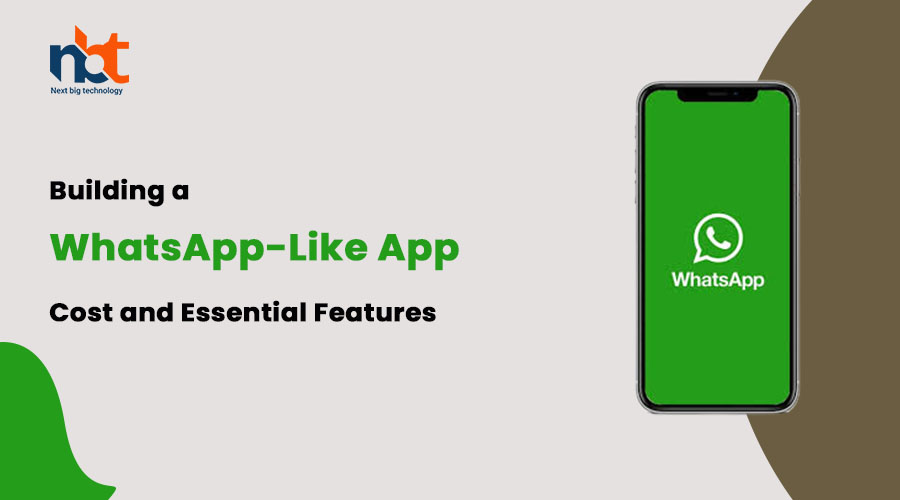Introduction:
WhatsApp has revolutionized the way we communicate, allowing us to connect with friends, family, and colleagues through instant messaging, voice calls, and video calls. If you’re considering building a WhatsApp-like app, it’s important to understand the costs involved and the key features required to create a seamless and secure communication platform. In this comprehensive guide, we will explore the cost factors associated with building a WhatsApp-like app and discuss the essential features that contribute to its success. Let’s dive in!
I. Cost Factors to Consider:
- Platform Selection:
- Determine whether you want to build the app for iOS, Android, or both platforms. The choice will impact development costs and timeframes.
- App Design:
- User interface (UI) and user experience (UX) design are crucial for a WhatsApp-like app. Costs may vary depending on the complexity and customization requirements.
- Development Team:
- Hiring experienced developers, designers, and quality assurance specialists is essential for building a robust and feature-rich app. The team size will impact costs.
- App Development Approach:
- Decide between native or cross-platform development. Native apps offer better performance but require separate development for iOS and Android. Cross-platform solutions can reduce development time and costs.
- Backend Infrastructure:
- Building a scalable and secure backend infrastructure to handle messaging, file sharing, and data storage is critical. Costs will vary based on infrastructure complexity and hosting requirements.
- Features and Functionality:
- The number and complexity of features you want to include in your app will affect development costs. Prioritize essential features to control costs.
- Security and Encryption:
- Implement robust security measures, end-to-end encryption, and data protection protocols to ensure user privacy and security. Additional development resources may be required.
- Testing and Quality Assurance:
- Allocate resources and budget for thorough testing to ensure the app’s functionality, performance, and security.
II. Essential Features for a WhatsApp-Like App:
- User Registration and Authentication:
- Allow users to create accounts using their phone numbers and implement secure authentication methods.
- Instant Messaging:
- Enable users to send and receive text messages in real-time, supporting individual and group chats.
- Voice and Video Calling:
- Implement voice calling and video calling features to enable users to have one-on-one or group audio/video conversations.
- Media Sharing:
- Allow users to share photos, videos, and documents with individuals or groups within the app.
- File Sharing:
- Enable users to share files of different formats, such as PDFs, Word documents, or spreadsheets, directly within the app.
- Push Notifications:
- Send real-time notifications to users for new messages, missed calls, or other relevant updates.
- Emojis and Stickers:
- Provide a wide range of expressive emojis and stickers to enhance communication and add personalization to conversations.
- Group Chats and Broadcast Lists:
- Allow users to create and participate in group chats for easier collaboration and communication with multiple contacts.
- End-to-End Encryption:
- Implement end-to-end encryption to ensure that only the sender and recipient can read the messages, enhancing privacy and security.
- Status Updates:
- Enable users to share text, photos, or videos as status updates visible to their contacts for a specified period.
- Read Receipts and Online Status:
- Display read receipts to indicate when messages have been read by the recipient. Show the online status of contacts to indicate their availability.
- Voice Message Recording:
- Enable users to record and send voice messages as an alternative to typing text messages.
- Cloud Backup and Sync:
- Provide the option to backup chat history, media, and settings to the cloud and sync them across devices for seamless user experience.
- Localization and Multi-Language Support:
- Localize the app for different regions and offer multi-language support to cater to a diverse user base.
Conclusion:
Building a WhatsApp-like app requires careful consideration of cost factors and the essential features needed to create a seamless and secure communication platform. Costs will vary depending on factors such as platform selection, app design, development approach, backend infrastructure, and the desired features and functionality. Prioritize the essential features to control costs while ensuring the app’s reliability and user satisfaction. By considering the cost factors and incorporating the essential features discussed in this guide, you can lay a solid foundation for developing a successful WhatsApp-like app that provides users with a seamless, secure, and user-friendly communication experience.










